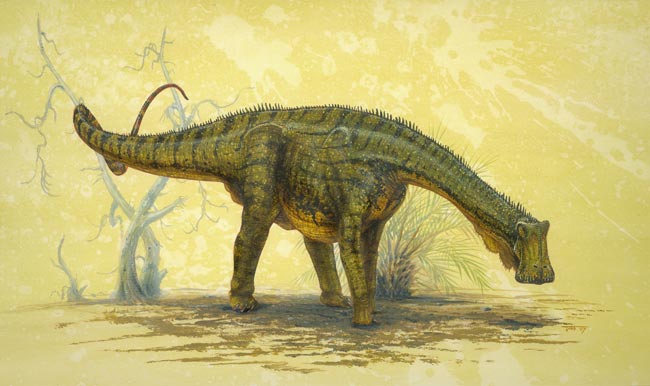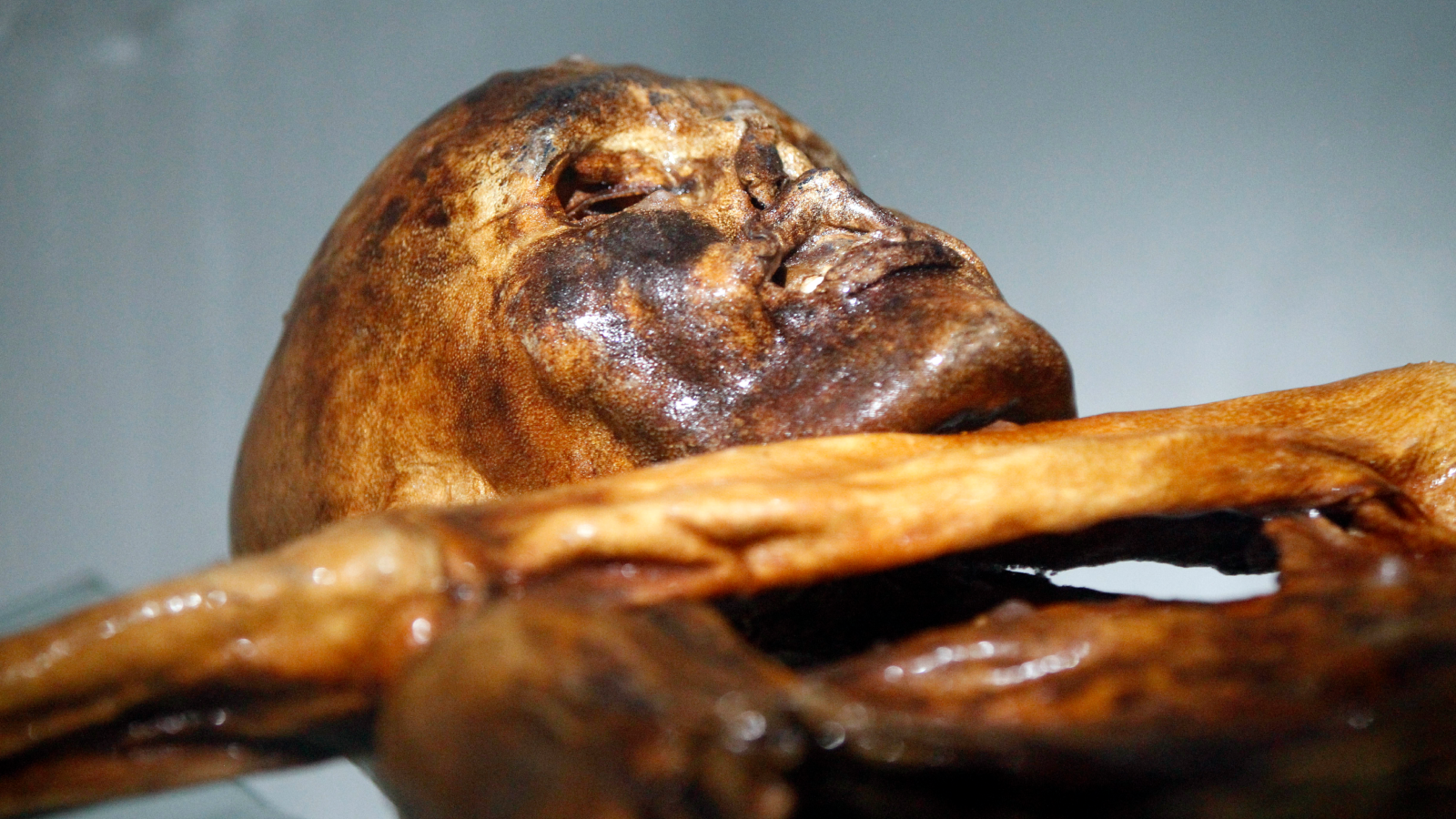Toothy Dinosaur Mowed Earth Like Cow

A stout sauropod with a shovel-shaped muzzle mowed Earth's greenery about 110 million years ago like a cow with hundreds of tiny teeth, a paleontologist said today.
The first bones from this dinosaur were picked up in the Sahara Desert in what is now Niger by French paleontologists in the 1950s. Then in the late 1990s, Paul Sereno, a paleontologist at the University of Chicago, and his colleagues discovered the bulk of the dino's bones, including its skull. Recent analyses, including X-ray scans of the fossil bones, revealed it to be an odd-looking behemoth dubbed Nigersaurus taqueti, capable of growing new needle-shaped teeth over and over when old ones fell out.
"Among dinosaurs," Sereno said, "Nigersaurus sets the Guinness record for tooth replacement." A detailed study of the dinosaur is detailed in the Nov. 21 online issue of the journal PLoS ONE.
To do the grassy vacuuming, Nigersaurus sported more than 50 rows of teeth lined up tightly along the front edge of its squared-off jaw. Nestled behind each cutting tooth, the scientists found nine replacement teeth, ready to step up to bat when its forerunner wore out. In total, there were more than 500 teeth.
Sereno and his colleagues also found that the dinosaur's spine was more air than bone. "The vertebrae are so paper-thin that it is difficult to imagine them coping with the stresses of everyday use—but we know they did it, and they did it well," said study coauthor Jeffrey Wilson, of the University of Michigan.
With such a "wimpy" backbone, Nigersaurus would've barely been able to lift its head above its back, maneuvering about like a Mesozoic cow mowing down mouthfuls of ferns and horsetails.
"Some of these unusual sauropods thrived to become the pre-eminent ground-level feeders of the Mesozoic," Wilson said.
Get the world’s most fascinating discoveries delivered straight to your inbox.
Measuring 30 feet (nine meters) from nose to tail-tip, Nigersaurus is considered small among its sauropod relatives, a group of plant-eating dinosaurs that includes the classic Diplodocus (for many years the longest dinosaur known).
Sereno and his colleagues used CT scans to peer inside the new specimen's braincase where small canals formed the brain's balancing organ, giving clues to Nigersaurus' habitual posture. The CT scans, along with markings on the animal's needle-shaped teeth, suggested an elephant-sized sauropod that kept its featherweight skull close to the ground.
"What we have here is the first good look at a sauropod brain, and it has important things to say about this animal’s posture and behavior," said study coauthor Lawrence Witmer, of Ohio University, who imaged the brain and equilibrium organ.
Sereno's research was partly funded by the National Geographic Society. An exhibit on Nigersaurus, including the original fossils and a reconstructed skeleton and skull of the dinosaur, will open today at the National Geographic Museum at Explorers Hall.
- Image Gallery: Dinosaur Fossils
- Vote: Avian Ancestors, Dinosaurs that Learned to Fly
- Image Gallery: Drawing Dinosaurs
Jeanna Bryner is managing editor of Scientific American. Previously she was editor in chief of Live Science and, prior to that, an editor at Scholastic's Science World magazine. Bryner has an English degree from Salisbury University, a master's degree in biogeochemistry and environmental sciences from the University of Maryland and a graduate science journalism degree from New York University. She has worked as a biologist in Florida, where she monitored wetlands and did field surveys for endangered species, including the gorgeous Florida Scrub Jay. She also received an ocean sciences journalism fellowship from the Woods Hole Oceanographic Institution. She is a firm believer that science is for everyone and that just about everything can be viewed through the lens of science.
 Live Science Plus
Live Science Plus





